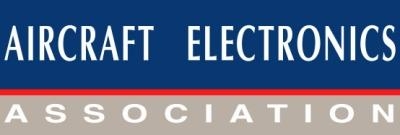Fri, Nov 27, 2015
Reinforces Requirement For Documentation Of New Parts To Be Installed
The FAA has published Notice N 8900.336 addressing the U.S./EU Maintenance Annex Guidance, Change 5 requirements for the FAA Form 8130-3 from production approval holder.

On Sept. 9, 2015, the MAG, Change 5, was signed. Generally, FAA-certificated air agencies holding EASA certification must comply with the requirements of a revision within 90 days of the effective date (implementation date Dec. 8, 2015). Change 5 of the MAG introduced a change to Section B, Appendix 1. The amendment to that section reinforces (and in many cases, established) the requirement that U.S.-based repair stations receive FAA Form 8130-3 for all new parts that will be installed in articles for which a dual release is to be issued.
Since the publication of the MAG (without the opportunity for public comment), the Aircraft Electronics Association, along with a large contingency of aviation associations, petitioned for a delay in the implementation of the guidance to better align with the Oct. 1 change to Part 21 allowing production approval holders to issue FAA Form 8130-3 as the Airworthiness Release Certificate after March 29, 2016. In addition, there are a number of topics that also needed clarity.
As a result, the FAA has issued N 8900.336, which publishes the joint position of the FAA and the EASA that a transition period for the mandatory requirement for the issuance of FAA Form 8130-3 for new parts and required by the MAG, Change 5, will be extended to align with Part 21, Amendment 21-28. Therefore, components released by the PAH, prior to the new implementation date of April 1, 2016, will not be required to be accompanied by FAA Form 8130-3. Only those components released from a PAH's quality system, on or after that date, must be accompanied by FAA Form 8130-3 if intended to be installed on articles subject to the FAA/EASA BASA.

In addition, the parts currently in inventory and appropriately documented with the required information will be grandfathered and remain suitable for installation into EU articles provided the date on the document is prior to April 1, 2016. The documentation for new parts currently in inventory or received prior to April 1, 2016, must, at a minimum, have a document or statement (containing the same technical information as an FAA Form 8130-3) issued by the PAH or supplier with direct ship authority.
Since the publication of the MAG 5, the AEA has received a number of requests for clarification. The association is continuing to work with the FAA and the EASA to assure a better understanding of the requirements. AEA says it will publish more information as it becomes available.
(Source: AEA news release)
More News
From 2023 (YouTube Version): Legacy of a Titan Robert (Bob) Anderson Hoover was a fighter pilot, test pilot, flight instructor, and air show superstar. More so, Bob Hoover was an i>[...]
Get The Latest in Aviation News NOW on Instagram Are you on Instagram yet? It's been around for a few years, quietly picking up traction mostly thanks to everybody's new obsession >[...]
Aero Linx: B-52H Stratofortress The B-52H Stratofortress is a long-range, heavy bomber that can perform a variety of missions. The bomber is capable of flying at high subsonic spee>[...]
Altimeter Setting The barometric pressure reading used to adjust a pressure altimeter for variations in existing atmospheric pressure or to the standard altimeter setting (29.92).>[...]
"Knowing that we play an active part in bettering people's lives is extremely rewarding. My team and I are very thankful for the opportunity to be here and to help in any way we ca>[...]
 Classic Aero-TV: Remembering Bob Hoover
Classic Aero-TV: Remembering Bob Hoover ANN FAQ: Follow Us On Instagram!
ANN FAQ: Follow Us On Instagram! ANN's Daily Aero-Linx (05.15.24)
ANN's Daily Aero-Linx (05.15.24) ANN's Daily Aero-Term (05.15.24):Altimeter Setting
ANN's Daily Aero-Term (05.15.24):Altimeter Setting Aero-News: Quote of the Day (05.16.24)
Aero-News: Quote of the Day (05.16.24)




